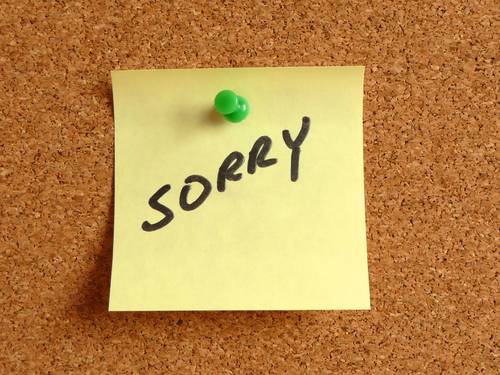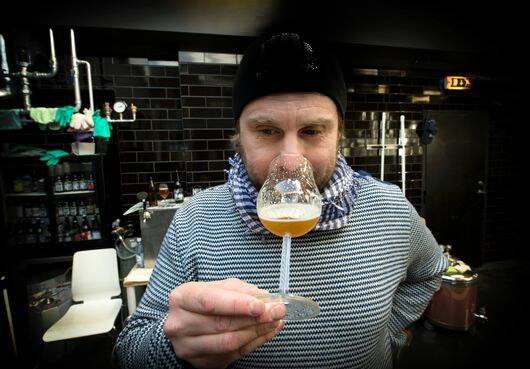Att jag och Manker har en oerhörd fascination för landet med oerhörda mängder Freedom! och örnar borta i väst är ganska gamla nyheter. Vi åker dit varje år på ölresa och har sett den senaste utvecklingen på craft beer-scenen på nära håll och hänger med sköna bryggare, bartime (TM) på fantastiska bryggpubar och njuter på världens bästa och största (det är ju USA) ölmässa – Great American Beer Festival.
Men det är först när man ser siffrorna från amerikanska Brewers Association på vad som egentligen händer därborta som man verkligen höjer på ögonbrynen! Det öppnar nämligen nu 1,5 bryggeri per dag – sug på den siffran!
Nyligen öppnade det 3200e bryggeriet och över 2000 bryggerier ligger i pipelinen att starta. Vidare är USA nu uppe i 13 stater med fler än 100 bryggerier (CA, CO, WA, OR, MI, NY, PA, TX, FL, WI, IL, NC och OH)
Föga oväntat är det IPA som står för merparten av försäljningen – räknat på craft beer så står IPA för 21% av försäljningen räknat i volym. 32% av craft beer-konsumtionen står kvinnor för och siffran för hushåll som köpt minst en craft beer har gått från 29% 2012 till 38% 2014. Det vore oerhört festligt att ha tillgång till liknande siffror för Sverige och Europa likt de som Brewers Association tar fram för USA.
Vi är så vetgiriga att vi grävde lite djupare i relationerna mellan Sverige och Brewers Association – som har ett särskilt band sedan många år tillbaka. Vi fick tag på Bob Pease, som är är högsta hönset, head honcho samt El Primero Cerveza Presidento så vi ställde lite frågor till honom! (Intervjun sker och publiceras på engelska, som ni kan se nedan. Klagomål riktas till närmsta busshållsplats)

Bob Pease – Brewers Association
Mr Pease! What an honor to get in touch with you! MankerBeer have been US Craft beer focused for over 5 years now and 2014 was the second time (but not the last!) we visited GABF. We wanna get to know you and BA a little more!
MB: What is Brewers Association, for those Swedes that have yet to encounter you? Who’s your members and what do you do? What is your objective?
– The Brewers Association is a not-for-profit trade association that represents the interests of America’s small and independent, craft breweries. It is an organization of brewers, for brewers and by brewers. More than 2,400 U.S. brewery members and 43,000 members of the American Homebrewers Association are joined by 900 members of the allied trade, 600 members of the beer wholesalers, retailers, individuals, and other organizations to make up the Brewers Association.
The Brewers Association purpose is to promote and protect small and independent American brewers, their craft beers and the community of brewing enthusiasts. We are active in Government Affairs in Washington, DC, we publish magazines (The New Brewer), books (Brewers Association Guide to Starting Your Own Brewery and the just released book Malt by John Mallett of Bells), we do promotional work with the media on behalf of American Craft Beer, we do statistical research and we promote and advance the message about producing quality beer through our publications, The Draught Beer Quality Manual for Retailers and the Best Practices Guide to Quality Craft Beer – Delivering Optimal Flavor to the Consumer”
MB: What is BA’s relation to Sweden and Swedes?
Sweden is the second largest export market for American craft beers, after Canada. Sweden has become a strong market for American craft beers since the BA initiated its export development program in 2004. We have long found the Swedish beer drinker to be open to and interested in a diverse range of beers while demanding and respecting products of flavor, quality and diversity. This has always aligned well with our industry. It has been our perspective that Systembolaget clearly attempts to satisfy that consumer demand with the wide range of products they carry. Its annual tender process allows for the introduction of new items on a regular basis. Buyers at Systembolaget are keenly interested in learning about different breweries, sampling their products, and making new and innovative products available to consumers. The Brewers Association educates our members through our Export Development Program about the opportunities that exist for them in Sweden and other Scandinavian countries.
MB: Every year you have one of the best stands at Stockholm Beer & Whisky festival, where you sponsor a stand and copious amounts of American craft beer to your partner for over 10 years, Oliver Twist. Can you tell us more about how this works and why is the stand so popular? How are the participating breweries and beers picked and by whom, and will you keep doing the same thing for another 10 years?
– Thank you for the kind words for the Brewers Association stand at the Stockholm Beer and Whisky Festival! The Brewers Association has participated in the Stockholm Beer & Whisky Festival for the past ten years with a booth showcasing American craft beers. Jorgen Hasselqvist of Oliver Twist, the grandfather of craft beer in Sweden has helped make that possible and imports the products we ship over as samples. That said, it should be clarified that the Brewers Association works with many importers in Sweden and is supportive of all importers that carry American craft beers. Jorgen and his team make our presence at SBWF possible but we are not exclusively partnered with him or the Oliver Twist. When the Brewers Association first starting working with Jorgen over ten years ago, there were few importers representing American craft beers – now this has changed.

Jugge Hasselqvist, the one and only
I think the BA’s space at the festival is popular because we try annually to showcase American craft beers that are not yet represented in Sweden. American craft beers that are currently represented by a Swedish importer are showcased at their importer’s booth and/or at the BA’s booth. But the BA booth is also a place where consumers and the trade can sample new products and possibly identify future partners. This is a great way for American craft beers not yet represented in Sweden, to get exposure.
The breweries and beers represented at the Brewers Association booth are members of the Export Development Program. All the member breweries are sent an invitation and those who are interested, participate by sending beers. There is no selection process. All Export Development Program members are given an equal opportunity to participate. Our stand is popular because of the quality of the beers we are offering and then that is fueled by the Swedish beer drinker.
We will continue to participate in the Stockholm Beer & Whisky Festival, as long as our brewery members are interested in doing this event.
MB: Our small country of about 9 million citizen tops many US breweries lists of amount of imported beer, why do you think that is?
– The Swedish beer drinker is highly educated and demands flavor, diversity and quality. Demand for craft beer be it from an American or Swedish craft brewery is driven by the beer drinker, who demands flavor, quality and authenticity. Additionally, Systembolaget plays a big role in that success. When Systembolaget purchases products, they are doing so for a large number of retail outlets.
MB: US Craft beer just passed Budweiser in amount of sold beers, this milestone must be a phenomenal achievement for BA. What is your next milestone?
– The Brewers Association has an ambitious goal of 20% market share for the craft segment by the year 2020 – this goal is specifically aimed to “foster a commitment to quality.” With more beer exported around the world, the challenge now is to ensure that beer quality is preserved in all cases, so consumers are assured a positive experience. It is going to take quality brewing, packaging, handling and serving from all brewers and those up and down the distribution system to achieve this goal. This is an area of focus for the Brewers Association and the Export Development Program.
The “Best Practices Guide to Quality Craft Beer – Delivering Optimal Flavor to the Consumer” was developed by BA to help encourage better distribution and handling practices among trading partners, both in the USA and internationally.
MB: Goose Island was purchased by AB-inBev some time back, 10 Barrel was just purchased by AB-inBev, which caused reactions around the craft beer globe, how does BA look upon this sort of sales?
– The BA does has no official position on these sorts of transactions. There are a large number of craft breweries and the craft sector is doing very well in the United States and internationally. It is not a surprise that the large international breweries would want to add to their portfolios with brands from small, domestic brewers that they believe will help them stay in front of distributors and consumers. Every brewery/small business is different. The Brewers Association is fully respectful on how a business wishes to enter or exit the market.
What the Brewers Association does advocate is for beer lovers to familiarize themselves with who is brewing the beer they are drinking.
MB: On the topic craft beer vs. crafty beer – how will it even be possible in the future to draw the line what is which?
The Brewers Association calls for transparency in brand ownership and for information to be clearly presented in a way that allows beer drinkers to make an informed choice about who brewed the beer they are drinking. Some beer drinkers really care about supporting small and independent breweries, whether in the USA or in Sweden, but this has nothing to do with the quality produced, but with which type of company the beer drinker wishes to support.
The St. Louis Post-Dispatch newspaper, ran an op-ed story on this subject “Craft or crafty? Consumers deserve to know the truth”
MB: One thing I am personally frighten of is the thought of hop shortage, but new hop varieties are developing all the time in the US. What trends will we see in hops over the next 5 years, do you think?
– The Brewers Association encourages brewers to develop stronger relationships with their hop merchants and hop growers. In this era of rapidly shifting hop acreage, brewers must make their aroma hop needs known to growers to ensure supply of their preferred varieties. Currently over 99% of hops used by craft brewers are purchased under multiyear contracts, a process that fosters communications between hop growers and brewers.
The U.S. hop industries are changing from mainly “alpha” acres to aroma acres. There is also a need for more hop acreage and processing infrastructure necessary for the hop industry to meet the growing demand for U.S. hop varieties. This demand is being generated by U.S. craft as well from craft breweries around the world.
Another recent development is the establishment of new hop growing regions outside of the Pacific Northwest. It will take time to develop infrastructure in these areas, but there is potential for hop cultivation in New York, Michigan, and Wisconsin as well as several other states.
The Brewers Association enjoys a strong relationship with U.S. hop producers. That partnership is critical to our members and helps ensure the breweries and hop producers share information needed to satisfy both parties.
For more information on the hop industry, the current issue of The New Brewer magazine, the journal of the Brewers Association, takes a comprehensive look at the 2014 hop industry both in the USA and other countries.
MB: Finally, is it even possible for you to name your all-time favorite top 3 US beers?
– The diversity and quality of American craft beers, means that there is a beer for any occasion and with the number of great breweries, producing great beers – my answer will change, as the occasion changes.
Stort tack till Bob Pease och Brewers Association! Det vore ju fint med ett Brewers Association i Sverige, Norden eller Europa. Men det lär vi förmodligen aldrig se – jag tror helt enkelt att det är för komplicerat och får många motstridiga krafter. Men vi tackar Bob Pease för de uttömmande svaren och hoppas vi ses på nästa års Great American Beer Festival – the greatest beer festival in the greatest nation in the world.

Bara ett par random örnar
Vi önskar er Freedom!!

























